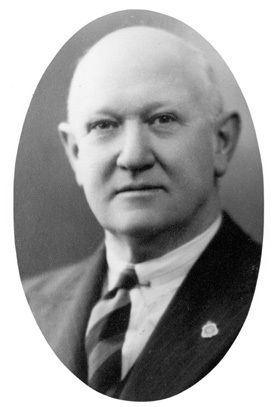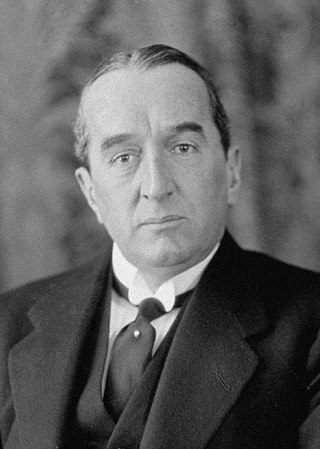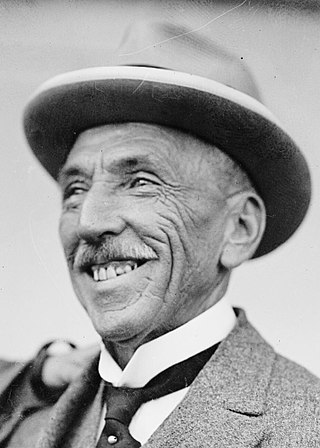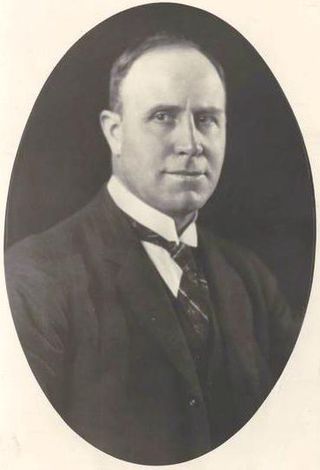
The Australia First Party (AFP), officially known as the Australia First Party (NSW) Incorporated, is an Australian nationalist political party founded in 1996 by Graeme Campbell, a former member of the Australian Labor Party. The policies of the party have been described as nationalist, anti-multicultural and economically protectionist, advocating for strict immigration controls, the prioritization of Australian citizens in employment, and the promotion of Australian culture and values. The party's logo includes the Southern Cross of the Eureka Flag.

Brigadier General Sydney Charles Edgar Herring, was an Australian Army colonel and temporary brigadier general who fought with distinction during the First World War. He retired in 1946 as an honorary brigadier.

Sir Duncan Ross McLarty, was an Australian politician and the 17th Premier of Western Australia.

The 1925 Australian federal election was held in Australia on 14 November 1925. All 75 seats in the House of Representatives and 22 of the 36 seats in the Senate were up for election. The incumbent Nationalist–Country coalition, led by Prime Minister Stanley Bruce, defeated the opposition Labor Party led by Matthew Charlton in a landslide. This was the first time any party had won a fourth consecutive federal election.

The 1919 Australian federal election was held on 13 December 1919 to elect members to the Parliament of Australia. All 75 seats in the House of Representatives and 19 of the 36 seats in the Senate were up for election. The incumbent Nationalist Party government won re-election, with Prime Minister Billy Hughes continuing in office.
This is a list of the members of the Australian House of Representatives in the Seventh Australian Parliament, which was elected at the 1917 election on 5 May 1917.
The 1918 Swan by-election was a by-election for the Division of Swan in the Australian House of Representatives, following the death of the sitting member Sir John Forrest. Held on 26 October 1918, the by-election led to the election of the youngest person to be elected until 2010 to the Parliament of Australia, Edwin Corboy. It saw the conservative vote split between the Country Party and the Nationalist Party, which directly prompted the introduction of preferential voting in Australia.
The Victorian Farmers' Union (VFU) was an association of farmers and primary producers formed in 1914 in the Australian state of Victoria. Although initially formed as an "absolutely non-political" entity, the VFU became a political party in 1916, and nominated candidates for the 1917 state election and subsequent elections. In later years it used the names Victorian Country Party, then United Country Party and is now the National Party of Australia – Victoria. At the 1917 election, because the support for the VFU was concentrated in rural seats, it won four of the 11 seats in the Victorian Legislative Assembly it contested, gaining about 6% of the vote state-wide. In 1918 it also won its first seat in the federal parliament, after preferential voting was introduced. At the 1920 state election the VFU vote increased to 8% and the number of seats to 13, giving the VFU the balance of power in the state Legislative Assembly.
The Liberal Union was a political party in South Australia resulting from a merger between the Liberal and Democratic Union (LDU) and the two independent conservative parties, the Australasian National League and the Farmers and Producers Political Union (FPPU) as a response to Labor successes culminating in South Australia's first majority government at the 1910 election.
This is a list of members of the Western Australian Legislative Council from 22 May 1916 to 21 May 1918. The chamber had 30 seats made up of ten provinces each electing three members, on a system of rotation whereby one-third of the members would retire at each biennial election.
This is a list of members of the Western Australian Legislative Council from 22 May 1918 to 21 May 1920. The chamber had 30 seats made up of ten provinces each electing three members, on a system of rotation whereby one-third of the members would retire at each biennial election.
This is a list of members of the Western Australian Legislative Assembly between the 1917 election and the 1921 election, together known as the 10th Parliament.
This is a list of the members of the Australian House of Representatives in the 10th Australian Parliament, which was elected at the 1925 election on 14 November 1925. The incumbent Nationalist Party of Australia led by Prime Minister of Australia Stanley Bruce in power since 1922 with coalition partner the Country Party led by Earle Page defeated the opposition Australian Labor Party led by Matthew Charlton. The Nationalist won 11 seats, they did not take at the 1922 election, although five of them were held by Liberal Party members, who had joined the Nationalist government after Bruce became Prime Minister in February 1923.
This article provides information on candidates who stood for the 1919 Australian federal election. The election was held on 13 December 1919.
Members of the New South Wales Legislative Assembly who served in the 24th parliament of New South Wales held their seats from 1917 to 1920. They were elected at the 1917 state election on 24 March 1917. Speaker was John Cohen until 19 August 1919 when he was succeeded by Daniel Levy.

The Holman ministry , also known as the Second Holman ministry or Holman Nationalist ministry was the 36th ministry of the New South Wales Government, and was led by the 19th Premier, William Holman.
The 1918 East Cavan by-election was a parliamentary by-election held for the United Kingdom House of Commons constituency of East Cavan on 20 June 1918. The election was caused by the death of the sitting member, Samuel Young of the Irish Parliamentary Party.

The 1920 Victorian state election was held in the Australian state of Victoria on Thursday 21 October 1920 to elect the 65 members of the state's Legislative Assembly.

The 1917 Victorian state election was held in the Australian state of Victoria on Thursday 15 November 1917 for the state's Legislative Assembly. 51 of the 65 Legislative Assembly seats were contested.
James Cornell was an Australian politician who served as a member of the Legislative Council of Western Australia from 1912 until his death. He was elected President of the Legislative Council in July 1946, but served just four months before dying in office.








